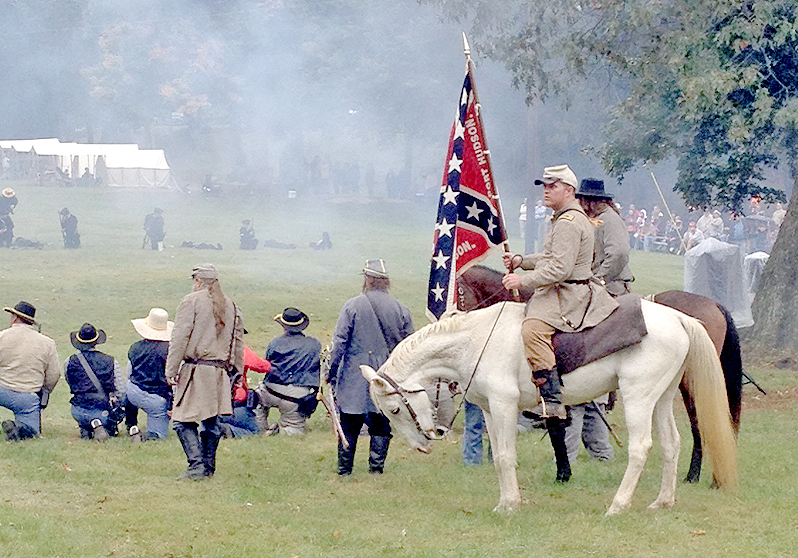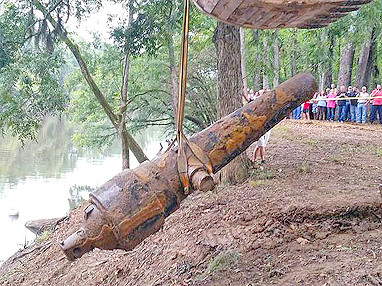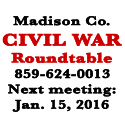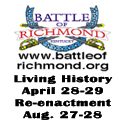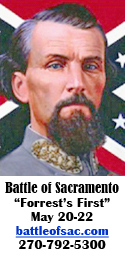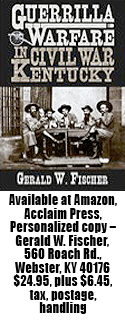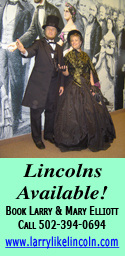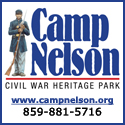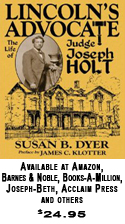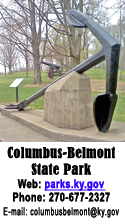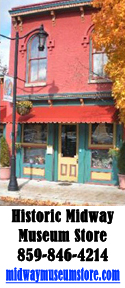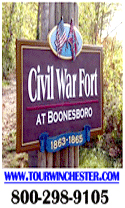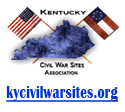|
More than $290 million realized ...
Virginia, unlike Kentucky, shows impact
of Civil War visitation, spending income
Virginia’s commemoration of the 150th anniversary of the Civil War resulted in more than $290 million in spending and 3.7 million people visiting the state, according to an economic impact study.
Programs marking the 150th anniversary generated more than $8.4 million in state tax revenue and nearly $5 million in local tax revenue, according to the study by Chmura Economics & Analytics. More
Bugle book review ...
Guerrillas in Kentucky? Familiar names
were prominent during Civil War activity
Frank and Jesse James, the Younger Brothers, William Quantrill – all names associated with the Civil War and the post-war frontier of Western America.
But, as Gerald Fischer points out in his book, Guerrilla Warfare in Civil War Kentucky, these outlaws also were active in the Commonwealth. They were among guerrilla forces that often invaded the state to rob and pillage and who attempted to evade capture and death from military and civil law enforcement. More
Civil War slowed things, but Haldemans
made Louisville newspapers prominent
Walter Haldeman and his son, William, were leading figures in the Kentucky newspaper industry, and, through their efforts, The Courier-Journal and The Louisville Times were established and later became national journalism icons.
Walter was born in Maysville on April 27, 1821, and started his journalism career in 1840 as a clerk in the business office of The Louisville Daily Journal, one of the leading Whig newspapers in the West. He left after three years to open a bookstore, but later took over The Daily Dime, which became so successful that Haldeman changed the name to The Louisville Morning Courier. More
Civil War theme is prominent
at Historic Midway Museum Store
If you’re looking for gifts or items with a Civil War theme, a stop at the Historic Midway Museum Store is in order.
Leslie and Bill Penn have more than 100 new and used titles of War Between the States books. Playing cards featuring Union and Confederate generals and the CSA battleflag also are available in addition to a “Midway in the Civil War” booklet by Penn himself. Then, there’s a Civil War-theme coloring book for children and children’s kepi caps.
Billed as “Gifts, Jewelry, Art and Books since 1996,” the store also features Kentucky crafts and equine and history books displayed on the second floor in a Victorian setting. Penn points out the store is the only authorized Keeneland Gift Shop satellite dealer in Midway. More
At Stone Mountain rally…
Confederate battle flag controversy
elicits some interesting responses
Recent complaints about the Confederate battle flag and Southern monuments and statues have elicited a variety of comments, including some of interest from Civil War re-enactors.
The flag particularly has come under fire after photos of accused Charleston, S.C., church shooter Dylann Roof surfaced depicting him with a miniature version of the banner. Since then, government officials, retailers and re-enactors have been criticized for selling the flag and any merchandise that depicts it. More
Jefferson Davis was opposed to secession
park manager tells Richmond roundtable
Jefferson Davis tried to stop secession, Ron Sydnor, manager of the Commonwealth’s Jefferson Davis Memorial Park, has declared.
As a U.S. congressman, senator and secretary of war, the eventual president of the Confederacy “knew what the U.S. Army was capable of, because he had built it,” Sydnor pointed out in remarks recently at the Madison County Civil War Roundtable.
Davis, Sydnor explained, was a man of intellect and vision who was interested in a myriad of projects, and, as secretary of war under President Franklin Pierce, did much to strengthen and improve the security of the United States. More
|
|
|
|
Miranda moved feet, bent her knees
to get Munfordville Civil War photos
All good photographers develop special techniques to get a good shot. For Miranda Pederson, it’s a matter of moving her feet and bending her knees.
“This enables me to create new angles, clean up the background from distracting elements, and keeps my brain active in thinking of new shots,” The Bowling Green Daily News photo editor emphasizes.
“I think capturing moments is key to my job, and it’s done in part by being a keen observer and by being prepared during an assignment,” the award-winning photographer continued. More
Did slavery bring it about?
Poll reveals fundamental disagreement
as to real cause of America’s Civil War
Was the role of slavery the primary reason for the Civil War?
According to a McClatchy-Marist Poll, Americans still fundamentally disagree about that and what should be taught to the nation’s schoolchildren.
Some 54 percent of respondents think slavery was the main reason for the Civil War. A sizable minority, 41 percent, do not think slavery was the main reason, the national survey found. More
7th Annual Holt Day . . .
2,000 attend community event, celebrate
receipt of gifts totaling nearly $700,000
A record attendance and announcement of new funds totaling nearly $700,000 highlighted the 7th Annual Holt Home Community Day, Sept. 26.
Some 2,000 visitors attended the event, which featured announcement of a $500,000 Transportation Enhancement grant from the State of Kentucky and $199,000 in tax credits from the Kentucky Heritage Council/Preservation Office. The funds will be used to continue restoration and renovation of the Joseph Holt Home, the Breckinridge County residence of the nation’s first Judge Advocate General (JAG). Judge Holt also served as prosecuting attorney for the trial of the Lincoln Assassination conspirators. More
Thanks to Mollie Morehead, Forrest
was able to realize his cavalry ‘first’
It’s the largest Civil War cavalry battle in Kentucky, but more importantly, the Battle of Sacramento is best known as Forrest’s First.
It not only was the first battle of Nathan Bedford Forrest, but also was the scene of the first battlefield maneuver that would become the hallmark of the fabled Confederate officer – the Cavalry Charge.
It all began with a visit just outside the village of Sacramento, eight miles north of Greenville, on Dec. 28, 1861. Forrest, then a lieutenant colonel, was approached by Mollie Morehead, a young Confederate sympathizer. She informed Forrest that just over the hill Federal troops were dismounted and watering their horses at a place called Garst’s Pond. More
Kentucky’s Civil War leaders …
Green Clay Smith had rich heritage,
spent his life in state, national fast lane
Union Major Gen. Green Clay Smith, a blue-blood soldier and politician, spent his 68 years in America’s fast lane.
A nephew of famed Kentucky abolitionist Cassius Clay, Smith was a U.S. representative, territorial governor of Montana, a Baptist minister and a nominee for the U.S. presidency in addition to serving as a Civil War commander. More
The Right to Secede ...
Secession may or may not be supported
by constitution; interpretation is key
The election of 1860 was a major turning point in the history of our nation. Whether right or wrong, and it has long been debated, the South believed Abraham Lincoln intended to increase the power of the central government and attack their “peculiar institution.” The month after his victory at the polls, president-elect Lincoln witnessed the secession of South Carolina, which quickly was followed by six more southern states. More
|
|
|

